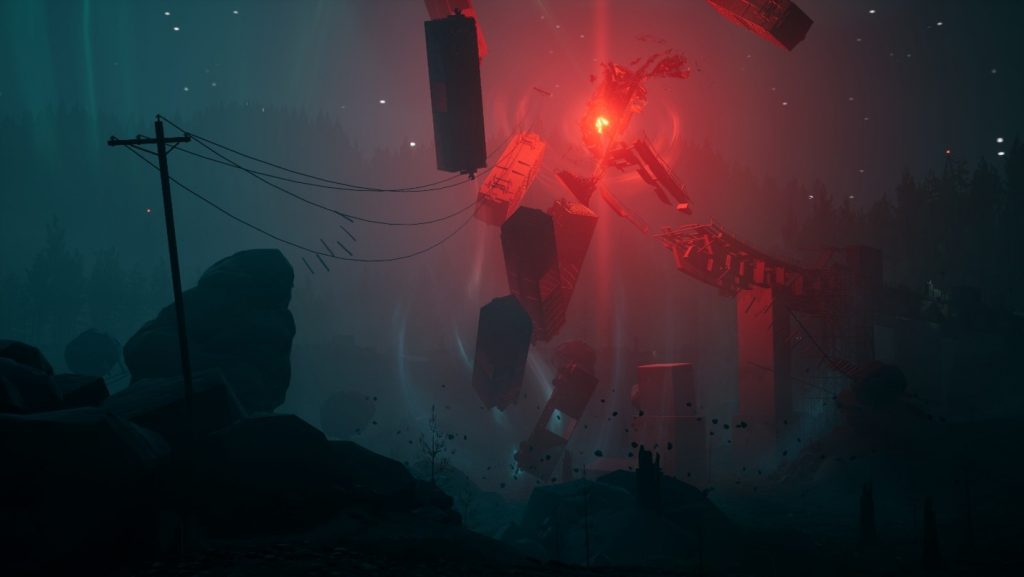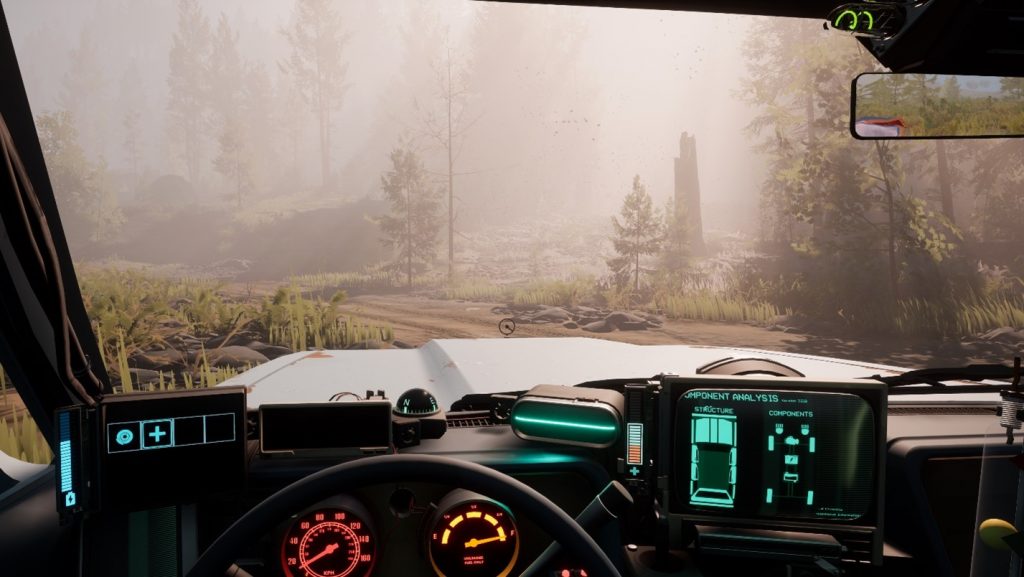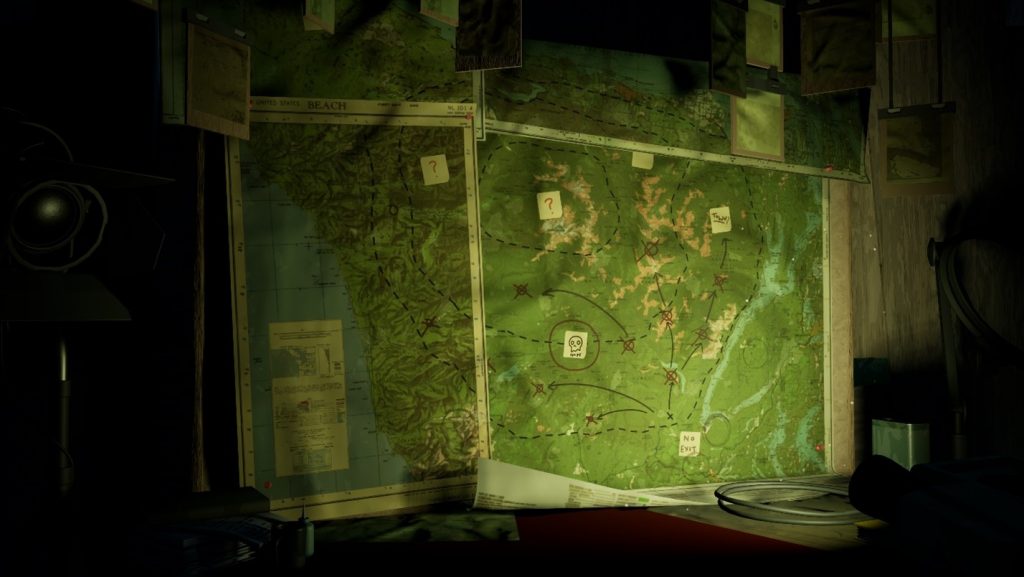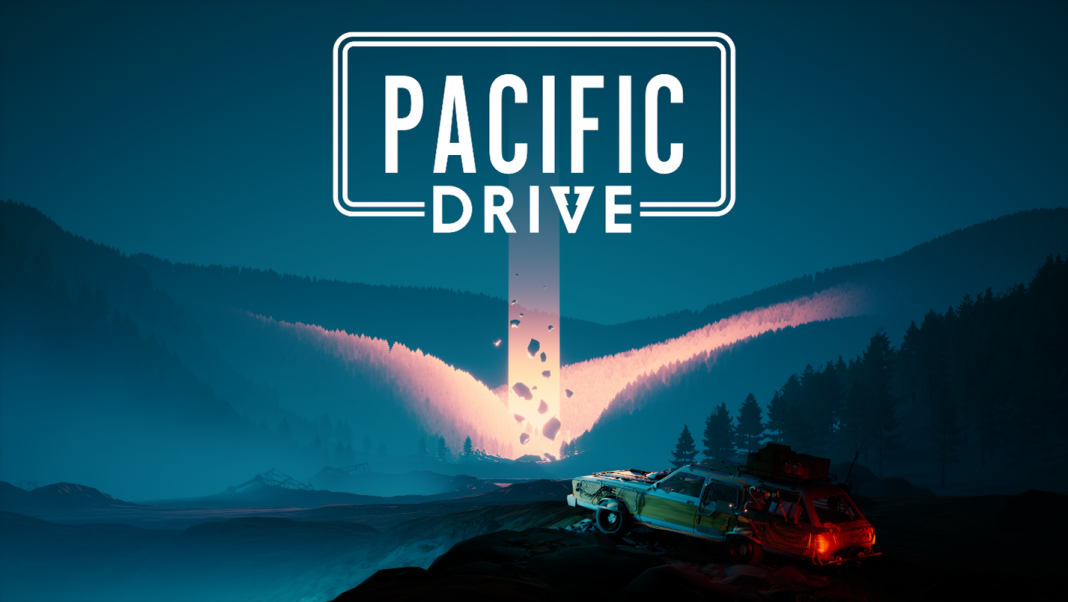Pacific Drive blindsided me.
Sure, I heard about it, saw the trailers, read the press releases. It seemed fascinating, but not in my wheelhouse. It was an open-world crafting game, and I got on with those like oil and water. Valheim, Medieval Dynasty, and others of their milieu always overwhelmed me.
I assumed Pacific Drive would just be another of that sort. I would have to appreciate it from afar, waving at its tantalizing sci-fi premise as it passed me by.
And then it ran me down.
I woke up ten hours after that—or was I always awake? I was scavenging, repairing, building. I was exploring. I was thriving. Pacific Drive didn’t drag me with it. I was, in fact, driving. And loving it.
What the hell?
Welcome to the Zone
Not that Zone, not yet—we’ll revisit that in a future article. No, this is the Olympic Exclusion Zone, a huge area walled off by the government for reasons undisclosed. Pacific Drive lore frequently and cheerfully reiterates that it’s a place where science has Gone Horribly Wrong. Matter and energy behave badly here. Everything is either broken or hazardous. Anomalies run amok. It’s an aggressively hostile world.

We play a hapless driver, isekai-ed into what is functionally another dimension given how badly the rules of reality keep breaking. But instead of a Truck-kun, our fate is linked to a Station Wagon-kun: a Remnant, a car that’s barely holding together in a world intent on killing us—or is it testing us?
Mysteries abound. We’re trapped here unless we figure out how to escape, ostensibly through exploration and experimentation.
Because that turned out just fine for the scientists of the Zone, right?
Zen and the Art of Station Wagon Maintenance
Pacific Drive taught me more about vehicular mindfulness and care in its first two hours than two entire days of lectures at a driving school.
Aside from what you see in all the trailers—the part crafting, the repair, the modular design—the game also reinforces granular habits otherwise taken for granted in driving games. Open the driver’s side door. Get in. Turn the key in the ignition. Turn on your lights and wipers if you need them. Check your map in the passenger-side computer. Maybe turn on the radio. Set the gear from park to drive.

And only then do you drive.
All that granularity is achieved by the brilliant UX decision of requiring you to consciously look at the things you’re doing. The driver’s side door. The ignition key. The levers for the lights and wipers. The computer. The radio. The gear shift. You need to turn your camera to look at these things to use them. It may sound awkward, but it easily becomes a ritual—one that you learn to do with speed and precision from the many times you’ll need to flee from a rampaging anomaly.
There’s a mandatory tactility to interacting with your car that subtly ingrains attention and care. Because you’ll know right away when you forget something, like closing your trunk door or shifting out of park. Which you may end up doing more often than you expect as you investigate what happened in the Zone.
You don’t even know what you don’t know
Pacific Drive proudly displays its sci-fi influences and inspirations. Sure, Roadside Picnic. Yes, X-Files. Very likely Control, too. But more than anything else, whether Ironwood Studios intended it, it’s so very Fringe.
Trying to figure things out. Scanning anomalies. Bearing witness to the consequences of science gone mad. Kludging together whatever tech we can to prevail. That’s the DNA of Fringe, albeit without the police-procedural drama.

I can’t discuss much without spoilers—and a game like this approaches its best state the less you know—but I can safely reference a few things since they’re public knowledge.
Massive Dynamic is a suitable analogue to the Olympic Exclusion Zone’s ARDA. I can imagine the Zone’s irascible and enigmatic Oppy as Nina Sharpe, adamant about how sacrifices must be made for science to be all it can be. And we, the silent, nameless Driver? Beleaguered but hypercompetent Olivia Dunham, through and through.
Or maybe I just really miss the show.
“Ghost on the Road”
Play Pacific Drive with headphones.
The audio design and the soundtrack are what seal the deal for the road-trip vibe. The positional audio when you’re inside the car, where you’re looking, what’s happening around you, it’s all vital for the immersion.
The selection of licensed songs for the in-game radio is appealingly eclectic and appropriately unpredictable for the Zone, but they all share that “this is a driving song” element. And when you’re nowhere near your car, or the radio is off? The background soundtrack is just as good at setting the mood for a landscape gone inside out—sometimes literally.
With how well everything comes together both visually and aurally, Pacific Drive comes across as a better VR game than most VR games. And it’s not even technically a VR game.
One final note on cohesion: the writing in Pacific Drive is some of the cleverest I’ve seen in a game. Even the most mundane items deliver amusing exposition.

It demonstrates a level of narrative care and polish that I’m happy to be captured by. I’m hooked on the game for everything else I said earlier, but this. This is what strapped me in, locked the door, and started the engine.
What is now my favorite open-world crafting-centric sci-fi horror-mystery road trip—say that five times fast—is available on Steam, the Epic Games Store, and PlayStation 5.



